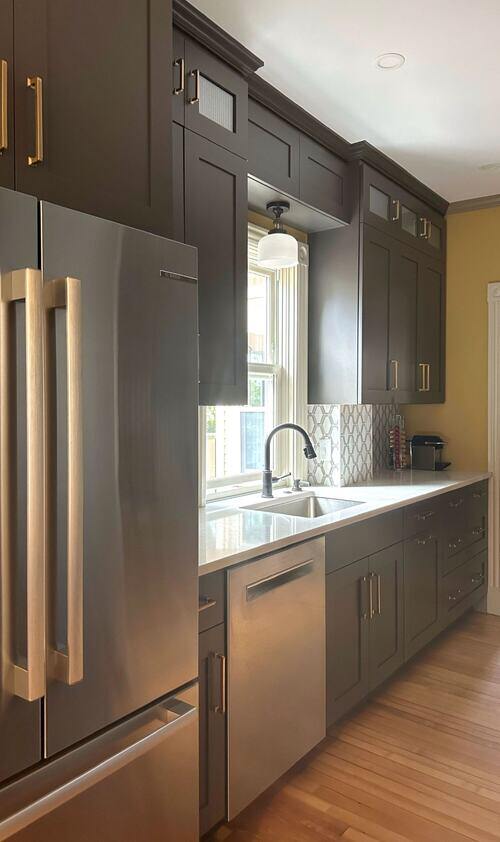Kitchen redesigns can breathe new life into your home, enhance functionality, and boost property value. However, embarking on such a project can be daunting. With some preparation, research, and careful planning, you can effectively navigate through the process.
Below, we break down the key steps you should take to ensure your kitchen redesign runs smoothly.
Assess Your Current Kitchen
The initial phase of your kitchen redesign should focus on analyzing your existing kitchen set-up. Pinpoint elements that you are fond of and those that need updating or modification.
Assess how well your kitchen meets your storage requirements, the practicality of your appliance arrangement, and the efficiency of your workspace. Do you require additional counter space? Could you use an expansive pantry? Is the lighting subpar? Would an island or a breakfast bar be beneficial?
By methodically recording what you appreciate and what you’d like to alter, you will have a defined guide of what your kitchen redesign should address.
Research and Gather Ideas for Your New Kitchen
After identifying what changes are needed, you'll want to start brainstorming ideas for your redesigned kitchen. Look to resources such as design magazines, Pinterest, and home renovation websites to begin forming your vision.
When consulting with a professional, save images of kitchens that catch your eye to help effectively illustrate your design ideas. Determine your desired color scheme, cabinetry style, type of countertops, and any appliances you're considering.
Additionally, think about how the style of your new kitchen will blend seamlessly with the rest of your home's décor. This is an exciting stage where you can let your imagination guide you in crafting the ideal kitchen design.
Define Your Budget and Scope of Work
Prior to your first professional consultation, it's essential to determine your financial plan for the kitchen redesign. Remember, remodeling a kitchen is not just an expense but a significant investment that can increase your home's value.
Carefully itemize potential costs, including those for new appliances, cabinetry, countertops, lighting fixtures, plumbing updates, and possible structural modifications.
It's also smart to set aside roughly 20% of your total budget for unforeseen costs that might crop up during the redesign process.
Consult a Professional Designer
Engaging with a seasoned kitchen designer is a crucial step in realizing your dream kitchen. Their expertise allows them to translate your vision into a functional, aesthetically pleasing design while keeping within your budget.
They can introduce you to design elements and materials you may not have thought about and anticipate potential issues that could arise. Your initial consultation will be more fruitful if you come prepared with your list of kitchen necessities, wish list items, and the compilation of inspirational images you've gathered.
This meeting will pave the way for an effective collaboration, where the designer's professional insights merge with your personal vision to lay the groundwork for your kitchen redesign.
Finalize Your Design Plan
Working alongside your designer, iron out the details of your kitchen design plan. This comprehensive blueprint should outline the chosen layout, color scheme, list of appliances, and selections for cabinets, countertops, and lighting.
The plan may also encompass the design for a backsplash, decisions regarding window treatments, and options for flooring. The plan should strike a balance between your vision, your financial plan, and the necessities you discovered during your initial kitchen assessment.
This is the stage where every facet of your kitchen redesign comes together in a cohesive, detailed plan, ready for implementation.
Implement Your Kitchen Redesign
The last leg of your kitchen redesign journey is the actual implementation. A trusted team of contractors, coordinated by your designer, will be assigned to your project. They will oversee everything from tearing out your old kitchen to installing your new selections.
The duration of this phase can vary, spanning a few weeks to a couple of months, depending on the complexity of your redesign. Although it might be tempting to rush the process, it's essential to remember that quality takes time.
With patience, the outcome will be a well-designed and functional kitchen that reflects your unique tastes and needs. So hold steady, knowing your kitchen redesign is heading towards a stunning finish.











